The top flower that represents rebirth is a powerful symbol of new beginnings and hope. Flowers have long been associated with springtime, growth, and renewal, so it’s no surprise that many blooms are tied to ideas of rebirth. When selecting a flower to represent rebirth, there are a few standout options that convey this meaning in a vivid, beautiful way.
Top 5 Flower That Represents Rebirth: Let’s explore some
Daffodils
The daffodil is a beautiful and iconic flower that has long been associated with the concept of rebirth. This connection can be seen in various aspects of the daffodil, from its early blooming to its bright color and cultural associations.
One of the main reasons why daffodils represent rebirth is their timing. Daffodils are one of the first flowers to bloom in the spring, often appearing while there is still snow on the ground. This early emergence from the cold and barren winter landscape symbolizes the earth’s renewal and new growth. It serves as a reminder that after a period of darkness and dormancy, life will always find a way to flourish again.
In addition to their timing, daffodils also have a bright and cheerful yellow color that evokes feelings of happiness and optimism. This vibrant hue is often associated with sunshine and warmth, further emphasizing the idea of new beginnings and the promise of a brighter future. The sight of daffodils in full bloom can bring a sense of joy and hope, making them a perfect representation of rebirth.
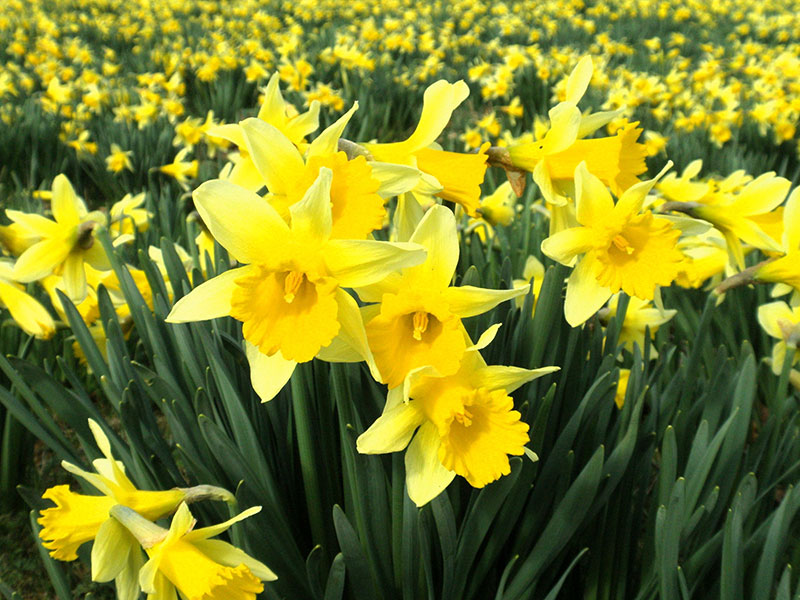
Furthermore, daffodils have strong cultural associations with Easter and Lent. In Christianity, these flowers are often used to symbolize the resurrection of Jesus Christ and the spiritual rebirth that comes with it. This connection to such significant religious events further solidifies the daffodil’s association with rebirth and new life.
In many other cultures, daffodils are also linked to themes of rebirth and rejuvenation. In ancient Greek mythology, for example, the daffodil was believed to have grown from the blood of the youth Hyacinth, who was reborn as a flower after his death. In Chinese culture, daffodils are seen as a symbol of good fortune and prosperity, representing the start of a new year and the potential for growth and success.
The daffodil is a powerful symbol of rebirth due to its early blooming, bright color, and cultural associations. Its presence in the spring landscape serves as a reminder that after a period of darkness and hardship, new life and growth will always emerge. Whether it be in nature or in our personal lives, the daffodil reminds us to embrace change and have faith in the cycle of renewal.
Lotus Flower
The lotus flower is a beautiful and exotic flower that has been revered for centuries for its symbolism of rebirth. This flower holds a special place in many cultures and religions, especially from a spiritual perspective. In this essay, we will explore the various ways in which the lotus symbolizes rebirth.
Firstly, the lotus rises from muddy, murky waters to produce a flower of unmatched beauty. This process represents the human journey from hardship and suffering to enlightenment and rebirth. The lotus grows in dirty and stagnant water, yet it remains untouched by its surroundings. It emerges from the darkness and transforms into a stunning flower, representing the potential for growth and transformation even in the most difficult circumstances. This symbolism is particularly significant in Buddhism, where the lotus is seen as a reminder that one can rise above the struggles and challenges of life to reach a state of enlightenment.
Furthermore, the lotus seeds have the ability to hibernate for long periods before finally sprouting and blooming. This characteristic of the lotus plant also serves as a powerful symbol of rebirth. The seeds lie dormant in the mud until they are ready to grow, just like how a person may go through a period of dormancy before experiencing a rebirth or transformation. This aspect of the lotus is often associated with patience, resilience, and the belief that everything happens in its own time.
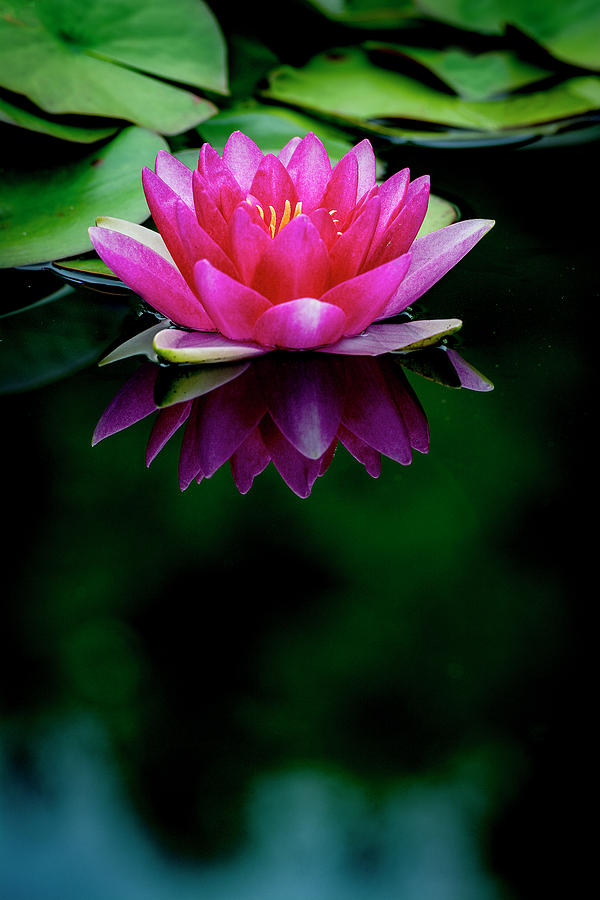
In addition to its representation of personal growth and transformation, the lotus is also seen as a symbol of the endless cycle of life, death, and reincarnation in Buddhism and Hinduism. These religions believe in the concept of reincarnation, where the soul leaves an old body and takes root again in a new one. This cycle is similar to the life cycle of the lotus, where the flower dies and is reborn again in the same spot. This connection between the lotus and the cycle of life and death is a powerful reminder of the impermanence of life and the continuous process of rebirth.
The lotus flower is a powerful symbol of rebirth from a spiritual perspective. Its ability to rise above difficult circumstances, its potential for growth and transformation, and its representation of the cycle of life and death make it a perfect symbol for rebirth. The lotus serves as a reminder that even in the darkest of times, there is always the possibility for new beginnings and growth.
Tulips
Tulips are a type of flowering plant that is known for its cup-like blooms that open wide in the spring. These beautiful flowers have strong associations with revival and renewal, making them a popular choice for gardens and floral arrangements.
One of the main reasons why tulips are associated with rebirth is because of their natural growth cycle. During the winter months, tulips go dormant and appear to die off completely. However, as temperatures warm up in the spring, they sprout back to life and bloom once again. This process of death and rebirth is seen as a representation of nature’s yearly cycle of renewal and growth.
In addition to their natural growth cycle, the vibrant colors of tulips also contribute to their association with rebirth. The vivid, saturated hues of these flowers feel fresh and new, perfect for celebrating a new beginning. Red tulips, in particular, hold a special meaning of “believe me – have faith in starting over.” This message of hope and optimism is often conveyed through the gift of red tulips.
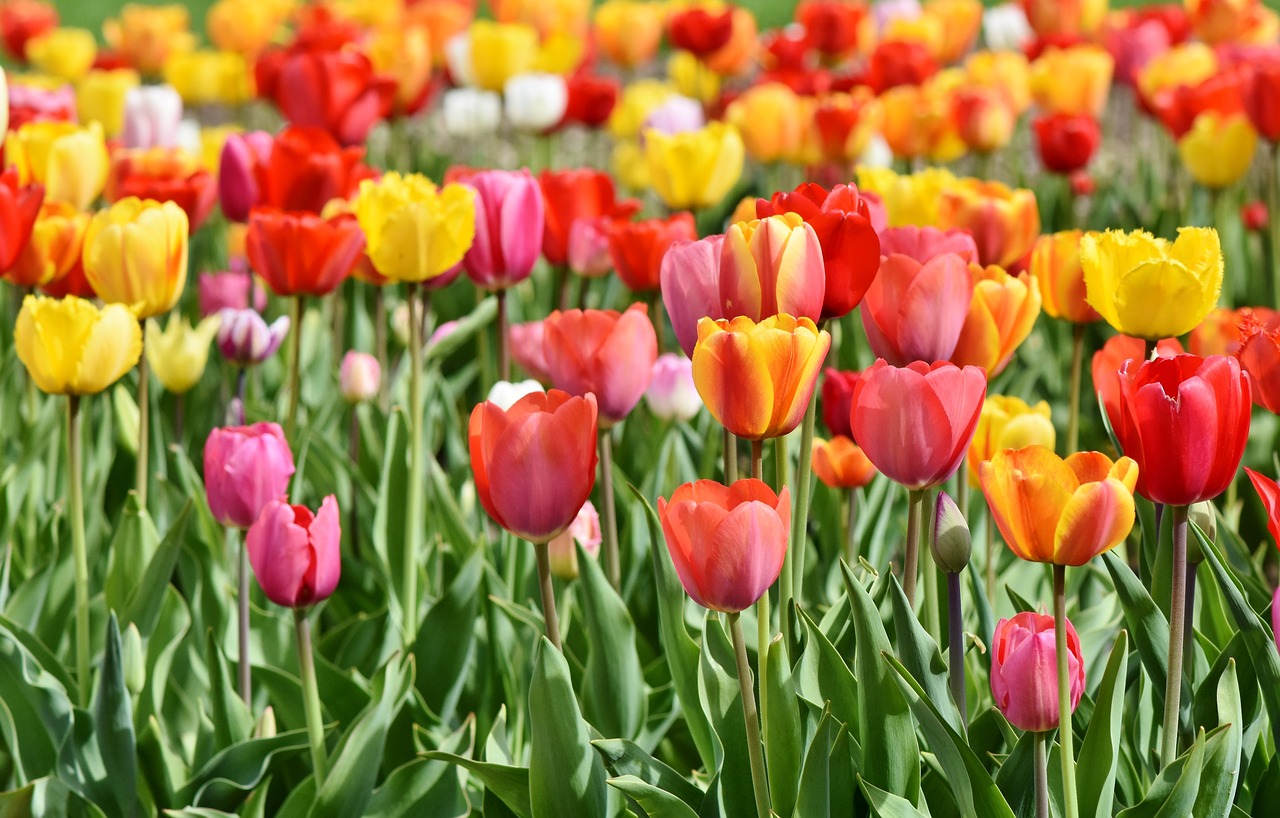
The symbolism of tulips and rebirth can also be traced back to ancient civilizations. In Persia and Turkey, red tulips were believed to symbolize resurrection and paradise. This ties them to concepts of being reborn into an idyllic afterlife. This belief has been passed down through generations and continues to be associated with red tulips today.
The association between tulips and rebirth is deeply rooted in their natural growth cycle, vibrant colors, and cultural symbolism. These beautiful flowers serve as a reminder that even in the darkest of times, there is always the potential for new beginnings and growth. So next time you see a field of blooming tulips, remember their powerful message of revival and renewal.
Peonies
Peonies are a type of flowering plant that is known for its lush, full blooms and sweet scent. These beautiful flowers have been cultivated and admired for centuries, and they hold a special meaning in many cultures around the world. One of the most significant meanings associated with peonies is their representation of rebirth.
In Chinese culture, peonies are highly revered and symbolize prosperity, good fortune, and the arrival of spring. This connection to spring is particularly significant as it represents the start of a new season and the beginning of a fresh, fertile phase. The blooming of peonies in the springtime is seen as a sign of new beginnings and the potential for growth and renewal.
Furthermore, the short lifespan of peonies when cut also adds to their symbolism of rebirth. Peonies only last for a short time once they are cut, reminding us to appreciate each day and the temporary gift of rebirth. This serves as a reminder to live in the present and make the most out of every moment.
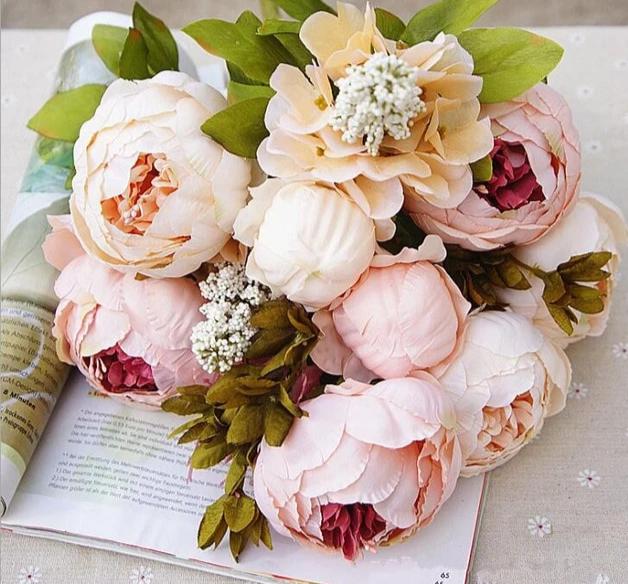
Another aspect of peonies that represents rebirth is their ability to grow back reliably every year. Unlike other flowers that may need to be replanted or reseeded, peonies have underground roots and tubers that survive winter dormancy and fuel their regrowth in the spring. This resilience and ability to come back stronger each year is a powerful symbol of rebirth and the cyclical nature of life.
In addition to their cultural and symbolic meanings, peonies also have a physical appearance that reflects rebirth. The tightly closed buds of peonies slowly unfurl into large, full blooms, representing the gradual process of transformation and growth. This visual representation of rebirth can serve as a reminder to embrace change and allow ourselves to evolve and grow.
Peonies are a top flower that represents rebirth due to their cultural significance, short lifespan, ability to regrow each year, and physical appearance. These beautiful flowers serve as a reminder to appreciate the present, embrace change, and find beauty in the cyclical nature of life.
Cherry Blossom
Cherry blossoms, also known as sakura in Japanese, are a beloved and iconic flower that holds great significance in Japanese culture. These delicate and stunning flowers bloom for a short period of time, usually between one to two weeks, before they wither and fall to the ground. This fleeting but breathtaking display of nature’s beauty has captured the hearts of people all over the world and has become a symbol of Japan.
In Japanese culture, cherry blossoms represent rebirth and renewal. The blooming of these flowers marks the arrival of spring, a season associated with new beginnings and fresh starts. After the long and cold winter months, the appearance of cherry blossoms brings a sense of hope and optimism for the future. It is a reminder that no matter how harsh the winter may have been, there is always a chance for new life and growth.
The short lifespan of cherry blossoms also holds a deeper meaning in Japanese culture. It is a reminder of the transience of life and the idea of living in the present moment. The flowers bloom for such a brief period, reminding us to appreciate the beauty around us and to make the most out of every moment. This concept, known as “mono no aware” in Japanese, emphasizes the impermanence of life and encourages people to embrace change and let go of attachments.
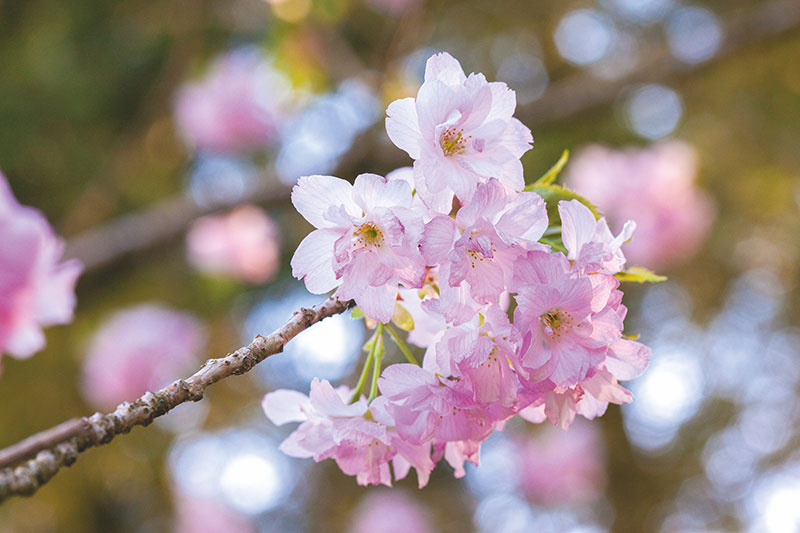
Furthermore, the cherry blossom also represents the cycle of life and death. The tree will bloom again in the following year, signifying the never-ending cycle of nature. This cycle is seen as a form of renewal and a chance for new beginnings. The falling petals of the cherry blossom are also seen as a metaphor for the fragility of life and the inevitability of death.
Apart from its cultural and symbolic significance, cherry blossoms are also deeply admired for their sheer beauty. The soft pink and white petals create a dreamy and ethereal atmosphere, making them a popular subject for art, literature, and photography. The sight of cherry blossoms in full bloom is truly a breathtaking experience, and many people travel to Japan specifically to witness this natural wonder.
Cherry blossoms hold a special place in Japanese culture as a symbol of rebirth, renewal, and the transience of life. Their short but spectacular blooming period serves as a reminder to appreciate the present moment and embrace change. These beautiful flowers not only add to the aesthetic beauty of Japan but also hold deep cultural and philosophical meanings that have captivated people for centuries.
Conclusion
The top flower that represents rebirth will have special meaning for anyone embarking on new beginnings or overcoming trials. Choices like the daffodil, lotus, tulip, and peony vividly evoke the magic, brevity, and promise of spring’s annual rebirth. With their colorful petals and stories of resilience, these flowers are the perfect way to celebrate life’s ability to renew itself again and again.

We’re Emma Carole Paradis and Kimberly Carole, the owners and designers of Impeccable Nest, based in Bedford, New Hampshire. A mother-daughter team with a love of design. Originally from Manhattan Beach, California, now based in Bedford, New Hampshire, we bring a Southern California cool and New England tradition to our design. Not only do we work together…we also live together in a multi-generational home…and a home that they are known to design for others.
